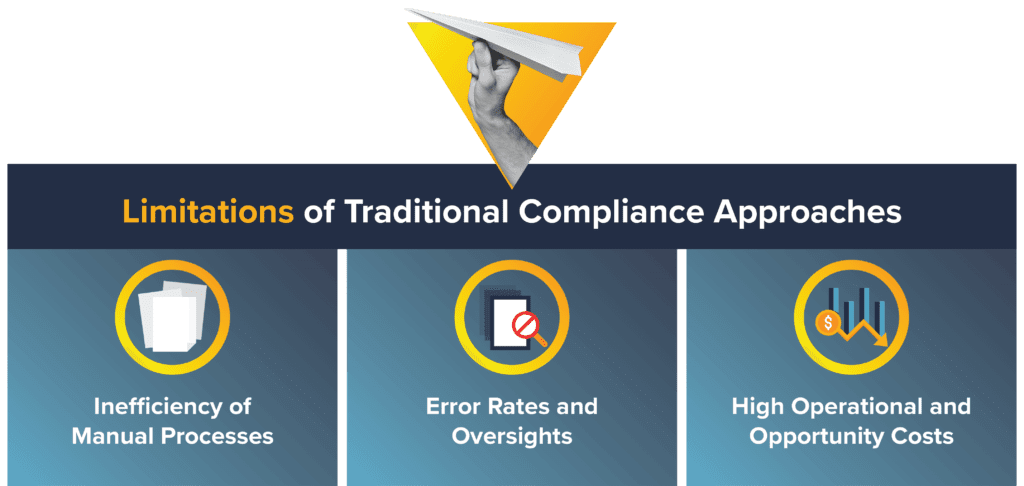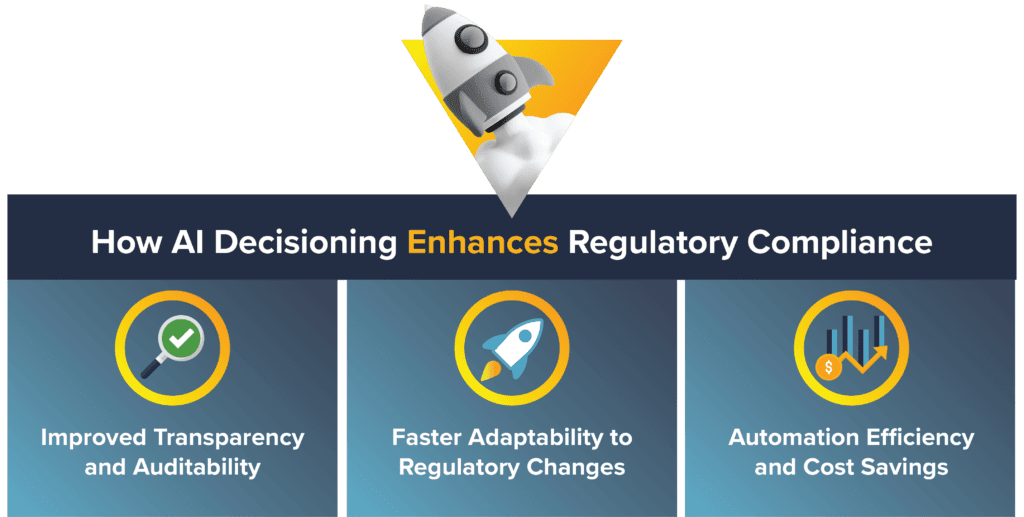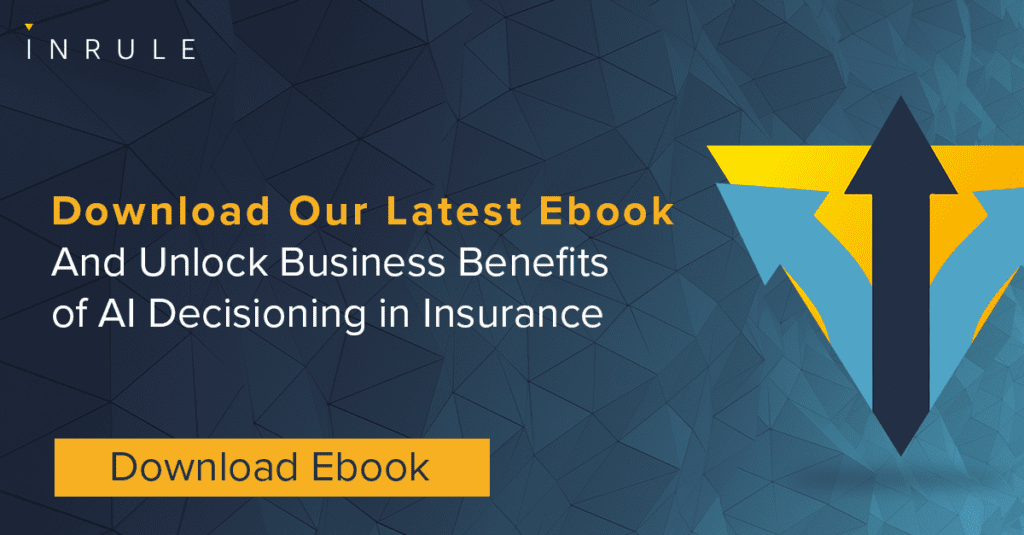Compliance is Complicated
Insurance companies operate in a complex and highly regulated environment that is constantly evolving. The volume of unique regulations stemming from various levels of government can be overwhelming. From evolving data privacy laws like GDPR and the CCPA to the New York Department of Financial Services’ mandate on cybersecurity policies and procedures, the scope and complexity of insurance compliance have never been greater.
Insurers must stay up-to-date with the wide range of legal and regulatory requirements or risk significant penalties, damage to their reputation, and even lost business opportunities from non-compliance. Adding to this complexity is the need for insurers to maintain round-the-clock compliance across all operations while balancing the demands of operational efficiency, customer satisfaction, adaptability to market changes, and driving profitable growth.
AI decisioning platforms provide insurers with tools to address these compliance-related challenges. These platforms help streamline compliance-related processes and decisions, reduce errors, and enable continuous monitoring. By leveraging AI decisioning, insurance companies can not only mitigate the risks of non-compliance but also align compliance efforts with broader business objectives and strategy.
In this third and last blog of our series AI Decisioning’s Triple Advantage for Insurance, we’ll explore how AI decisioning platforms (combining business rule engine, machine learning and process automation) are driving compliance excellence in the insurance industry and delivering numerous business benefits.
The Risks of Non-Compliance
Amidst the complex set of rules required for compliance, regulators expect insurers to maintain transparent, auditable records of all transactions, ensure data protection, and follow ethical practices. Failure to do so can result in fines reaching millions of dollars. However, the impact of non-compliance extends beyond potentially steep fines.
Strategic risks include damage to brand reputation, which can lead to a loss of confidence in a company’s ability to operate ethically and responsibly. Such an erosion of trust can also result in losing valuable contracts and relationships and opportunity costs in the form of lost future business.
The Challenge of Balancing Compliance with Profitable Growth
The challenge for insurance company compliance teams is not just in understanding the regulations but consistently applying them across all business processes and departments. Any oversight or human error can lead to serious compliance violations.
While compliance is critical, it shouldn’t come at the expense of profit, growth, and innovation. Insurers must be able to introduce timely new products, improve customer experiences, and maintain profitability while remaining compliant. A balanced approach is essential.
For many insurers today, traditional compliance frameworks rely heavily on manual processes, such as detailed documentation reviews and compliance verifications. These labor-intensive methods make it challenging to balance compliance with profitability and innovation. This is where AI decisioning platforms offer transformative potential, driving operational efficiency and ensuring a future-proof approach to regulatory compliance.
Limitations of Traditional Insurance Compliance Approaches
Inefficiency of Manual Processes
Traditional compliance management relies on manual documentation and human review. These methods are slow and error-prone, especially in large, complex organizations. In addition, manually reviewing and verifying data for compliance with regulations is labor-intensive and costly, making it difficult for companies to scale compliance efforts.
Error Rates and Oversights
Human-driven compliance processes are susceptible to mistakes. In the insurance context, where thousands of policies and claims are handled daily, even a minor oversight can lead to significant compliance violations.
High Operational and Opportunity Costs
Maintaining a large team of compliance officers increases labor costs and diverts resources from other activities that drive profitability and support broader business goals. Furthermore, traditional compliance approaches’ time-consuming nature can slow product launches, reduce customer satisfaction, and impede the company’s ability to quickly adapt to regulatory changes.

How AI Decisioning Enhances Regulatory Compliance
AI decisioning platforms facilitate compliance by analyzing large datasets and detecting patterns that could indicate non-compliance in automated processes such as underwriting, claims processing, and policy renewals. In doing so they enhance compliance in several ways:
Improved Transparency and Auditability
Through reporting, AI decisioning allows for continuous auditing and transparency of processes and decisions. For instance, the system tracks decision rules and logic changes with “version controls” so that business users always know who made changes and when they did so. Reporting also provides transparency into the rationale and criteria behind a decision, making it much easier to explain and defend the decision during an audit or compliance investigation. As a result, audits become smoother, less resource-intensive, and more likely to result in favorable outcomes.
Faster Adaptability to Regulatory Changes
AI decisioning platforms enable compliance officers and other insurance subject matter experts to quickly incorporate new regulations into their business processes using low-code business rule changes, reducing the need to check decisions against regulations manually. Since subject matter experts can directly implement compliance-related rules, there is a reduced risk of misinterpretation or incorrect implementation by IT personnel, who may not have the same understanding of compliance requirements. By eliminating the need for IT support, compliance efforts and new product launches can be accelerated.
Automation Efficiency and Cost Savings
AI decisioning platforms reduce the need for time-consuming, periodic manual reviews by large teams of compliance officers. They also proactively identify compliance issues such as fraud to help avoid financial penalties and expenses related to resolving non-compliance incidents. By transforming compliance from a resource-intensive function to a more streamlined and efficient process, organizations not only free up resources for business growth but also increase the likelihood of maintaining consistent, up-to-date compliance across operations.

Insurance Compliance Doesn’t Have to Be So Complicated
AI decisioning platforms reduce much of the complexity of compliance for insurers. AI decisioning platforms offer a strategic solution that empowers insurers to better navigate the complicated landscape of changing laws and regulations. By automating manual compliance processes, reducing error rates, and providing agility to compliance methods, these platforms help insurers balance mitigating the risk of non-compliance with driving operational efficiencies and growth.
Are you curious about other ways AI decisioning provides operational advantages for insurance companies? Check out the first two articles in this series:
Part 1: How AI Decisioning Fuels Operational Efficiencies in Insurance
Part 2: The Advantages of AI Decisioning in Insurance Fraud Detection
Or read our ebook Revolutionizing Insurance with an AI Decisioning Platform


